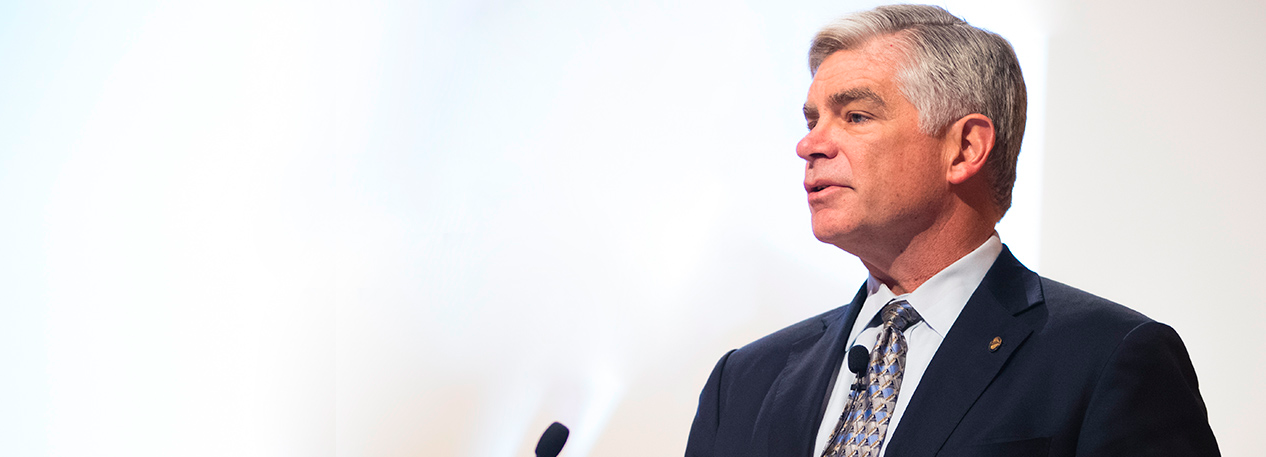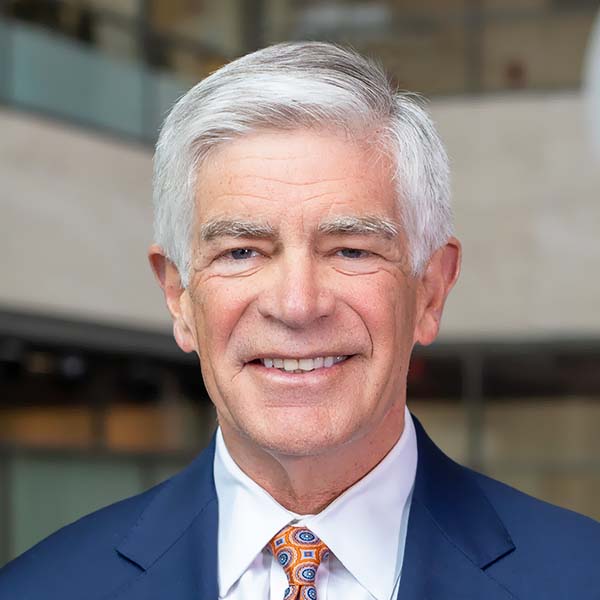Good afternoon! It’s an honor to be joined by all of you here today. As a Fed president, I’m not sure my star power can match that of some of my fellow panelists. I’ll admit I’m no Deepak Chopra or T. D. Jakes, but I’m also pretty thrilled to rub shoulders with them — even if only virtually.
But on a serious note, Operation HOPE’s mission of ensuring financial uplift and economic inclusion for all Americans could not be more important — or timelier, given present circumstances — so I am very excited and frankly flattered to be a part of this great series of events this week.
I’m also excited to sketch out a few thoughts on our present circumstances and to chat with John Bryant. But before I can get to that, there is something else I have to do. We call it the standard Fed disclaimer: The views I express today are my own and do not necessarily reflect those of anyone else on the Federal Open Market Committee or in the Federal Reserve System.
It’s no secret to anyone here that we’re in the middle of twin crises the likes of which none of us has ever experienced. COVID-19 has sickened tens of millions of our fellow Americans and killed hundreds of thousands of them. And the virus, unfortunately, is still circulating widely throughout the country.
The pandemic also spurred an economic downturn so severe that, in the second quarter of this year, we experienced the sharpest contraction of gross domestic product (or GDP) in recorded American history. Millions of Americans lost their jobs, and millions more had their hours cut.
We see the scars everywhere — in the miles-long lines at foodbanks that indicate massive suffering and in the shuttered storefronts and restaurants that now dominate so many of our commercial districts that just a few months ago were bustling.
It’s also no secret that the effects of this unprecedented crisis have fallen most harshly on those least able to bear them. Racial minorities — particularly Hispanic and Black Americans — have been more affected by both the health crisis and the economic crisis than other groups.
Hispanics and Black Americans have been sickened by COVID-19 at a rate disproportionate to their population. They have also died at a higher rate. Those same groups also are more likely to hold jobs that one can’t perform from home, which is probably one of the reasons their infection rates are higher than other groups. They are also more likely to have held jobs that have either been replaced by automation or that have simply been eliminated.
This is a five-alarm fire.
The one thing I truly admire about Operation HOPE is that it doesn’t just call itself a non-profit organization. It calls itself a for-purpose organization.
The Federal Reserve is also a for-purpose organization. Since the Fed is the nation’s central bank, Congress has mandated us to provide for maximum employment and stable prices — that is, lots of jobs and low inflation.
But another purpose I believe we can work toward is narrowing the yawning racial disparities that continue to plague our society.
So, how do we do that?
Given that I am a Fed president, you probably guessed that I might say monetary policy. And I do think that’s part of the solution. That’s why I’m pleased that, in late August, following a nearly two-year review, the Fed announced a shift in our approach to fulfilling that dual mandate that I mentioned earlier.
Here is the upshot: No longer will we head off higher inflation by preemptively raising interest rates before we have achieved full employment. Moreover, after long periods of sub-2 percent inflation (as we now find ourselves in), we will accept periods of above-2 percent inflation. Tolerating the risk of slightly higher inflation, in our view, is worth it if it helps us achieve our employment goals.
That’s important because one of the salutary trends of the pre-COVID-19 economy was that economic gains, at least on a limited basis, were finally being enjoyed by lower-wage workers, a disproportionate percentage of whom are racial minorities. We still had a very, very long way to go, of course. But it’s clear that we must achieve full employment if we are going to make progress on this issue.
We also need to do a better job of transitioning workers into careers that offer solid pay and strong future prospects. Here at the Philadelphia Fed, we’ve been thinking hard about how to get workers into what we call opportunity occupations — that is, jobs that pay the median wage or better and that don’t require a college degree.
I’d like to share the results of just one study we’ve done because I think the results are truly exciting.
The study began when Philadelphia Fed researchers, in partnership with the Cleveland Fed, asked a question: How do we transition workers in jobs most likely to disappear into stable, higher-wage positions?
They came up with an ingenious idea: They looked at the skill sets of people who are holding those jobs that are most at risk of disappearing. They then matched those skills to jobs that would pay at least 10 percent more than their current wage and that don’t require a traditional four-year degree.
The findings were incredibly encouraging. Looking at 33 metro areas nationwide, they found that nearly half of lower-wage employment can be paired with at least one higher-paying occupation requiring similar skills. For transitions connecting the most similar occupations identified in the study, the pay differences are significant, with an average bump in wages of almost $15,000 — a 49 percent increase in salary.
The opportunities for public‒private partnerships to initiate these kinds of transitions are obvious, and I’m proud to say that the Philadelphia Fed helped launch one with Comcast and Philadelphia Works, our local workforce development board. That’s just one project, of course, but if it proves to be replicable across cities and industries, I really think we can begin to move the needle.
There is a division within the Federal Reserve that has defined racial equity as “the just and fair inclusion in an economy in which all can participate, prosper, and reach their full potential, and race can no longer predict life outcomes.” That’s a lofty goal, of course, but a really profound one, I think: the idea that we can one day decouple race from life outcomes. If we get there, I know that Operation HOPE will have played a role.
So, thanks again for having me, and now I’m happy to chat with John Bryant.
- The views expressed here are the speaker’s own and do not necessarily reflect those of anyone else in the Federal Reserve System.

